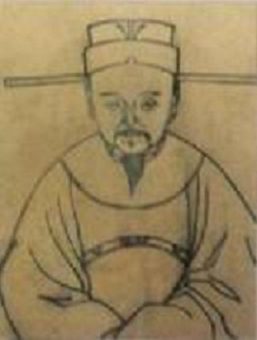Unit 11
Text
曰(yuē) 喜(xǐ) 怒(nù),曰(yuē) 哀(āi) 懼(jù),
愛(ài) 惡(wù) 欲(yù),七(qī) 情(qíng) 具(jù)。
匏(páo) 土(tǔ) 革(gé),木(mù) 石(shí) 金(jīn),
絲(sī) 與(yǔ) 竹(zhú),乃(nǎi) 八(bā) 音(yīn)。
Vocabulary
(1) 喜(xǐ):happy
(2) 怒(nù):angry
(3) 哀(āi):sad
(4) 懼(jù):afraid
(5) 愛(ài):like
(6) 惡(wù):dislike
(7) 欲(yù):desire
(8) 七情(qī qíng):seven kinds of emotion, i.e. feeling happy, angry, sad, and afraid as well as having likes, dislikes and desires
(9) 具(jù):have, possess
(10) 匏(páo):bitter gourd whose shape is like a bottle, here referring to the musical instrument made from the bitter gourd, e.g. sheng or yu.
(11) 土(tǔ):clay, referring to the musical instrument made with clay, e.g. xun
(12) 革(gé):leather, referring to the musical instrument made with leather, e.g. drum
(13) 木(mù):wood, referring to the musical instrument made with wood, e.g. zhu
(14) 石(shí):jade or stone, referring to the instrument made with jade or stone, e.g. qing
(15) 金(jīn):metal, referring to the musical instrument made with metal, e.g. bell or gong
(16) 絲(sī):silk string, referring to the stringed musical instrument, e.g. pipa, qin, or Chinese zither
(17) 竹(zhú):bamboo pipe, referring to the musical instrument made from bamboo pipe, e.g. xiao or flute
(18) 音(yīn):sound, referring to musical instrument(s)
Text Explanation
Happiness, anger, sadness, fear, like, dislike, and desire are seven types of emotion which human beings are born with. Gourd, clay, leather, wood, jade, metal, string, and pipe are eight kinds of materials used to make eight types of musical instruments.
Discussion Questions
1. A wise, civilized person knows how to control his temper. Do you know how to control your own temper?
2. When you are having a bad temper, how do you control or get rid of your bad temper?
3. Do you know how to play a musical instrument? If so, please share your experience in learning the instrument.
Story
The Yellow Emperor and Music
To the ancient Chinese, music was a tool to contact the gods. Music was not only for people’s enjoyment and entertainment, but also a sacred ceremony to reconcile man and the universe.
The invention of Chinese musical instruments took place very early. In the book Shi-Jing, which dates to 1000 BC, many different musical instruments are frequently mentioned. According to some history books, Fu Xi invented the Chinese zither, Lady Wa made the bamboo flute, Ling Lun devised the bell, and Shen Nong created the five-string zither.
The Yellow Emperor commissioned Ling Lun to create the temperament of music, and sort out the twelve principles (the twelve scales). Ling Lun carved the sturdiest part of a well-shaped bamboo stalk, which he found in Xishan, into a bamboo flute. When he was playing the flute, he caused several phoenixes to suddenly land on a tree nearby. A male phoenix started to sing first, and its first sound was exactly the same sound as Ling Lun’s bamboo flute. The bird then sang five more notes, and Ling Lun quickly carved five more flutes that could play the very same notes. A female phoenix then sang six more notes, and six more flutes were made for them as well. Ling Lun arranged the twelve flutes in order of their musical scale, and created the so-called “twelve principles.” In order to preserve the twelve notes permanently, the Yellow Emperor ordered twelve copper bells to be made that could provide the exact same notes. Afterwards, all musical scales of different instruments were made to be consistent with the copper bells.
Besides the copper bells created by Ling Lun, the Yellow Emperor also devised a special battle drum to boost the army’s morale while they were at war with Chi You. The surface of the drum was made of the sun-dried skin of a monster called Kui, which lived in the Eastern Ocean. And the drumstick was made of the largest bone of the Thunder God. When the Emperor beat this unique drum, it could be heard five hundred miles away and could even change the colors of the sky and land.
Moreover, when the Yellow Emperor assembled the gods and spirits of the world at Taishan, he composed the music called “Ching Jue.” The music was so moving that it could “startle the earth and cause ghosts and gods to weep.” It was truly something from the heavens, and mortals were not able to perceive it. After the Emperor defeated Chi You, he composed another piece of music called “The Gang Gu Melody” in order to celebrate their victory. That piece of music was moving as well.
Writing Reflection
1. Is there good and bad music? How can we tell good music from bad music? What impact can music produce?
2. Find some expressions or stories that are related to or about music.
Pages: 1 2 3 4 5 6 7 8 9 10 11 12 13 14 15 16 17 18 19 20 21 22 23 24




